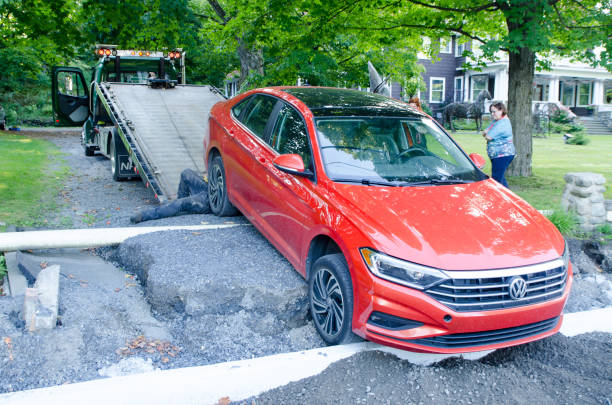In the fast-paced realm of modern transportation, the need for efficient and rapid emergency towing services has never been more critical. When vehicles break down or accidents occur on the road, technology plays a pivotal role in streamlining the response process and ensuring a swift and effective solution. This article delves into the evolving landscape of emergency towing, exploring the cutting-edge technologies that enable rapid response, enhance safety, and elevate the overall experience for drivers in distress.
I. Real-Time Dispatch Systems: The Backbone of Rapid Response
At the heart of modern emergency towing is the utilization of real-time dispatch systems. Gone are the days of relying solely on phone calls and radio communication. Today, towing companies leverage advanced software and GPS tracking to monitor their fleet in real-time. This allows dispatchers to pinpoint the nearest available tow truck to a stranded vehicle, minimizing response times and expediting assistance.
II. Mobile Apps for On-the-Spot Assistance
The advent of mobile apps has revolutionized the way drivers request emergency towing services. Many towing companies now offer user-friendly mobile applications that allow drivers to request assistance with a few taps on their smartphones. These apps often include features such as real-time tracking of the approaching tow truck, estimated arrival times, and digital communication with the towing team. This level of accessibility and transparency provides drivers with peace of mind during stressful situations.
III. Telematics and Vehicle Diagnostics
Telematics, a blend of telecommunications and informatics, has emerged as a game-changer in the towing industry. Integrated into vehicles, telematics systems continuously monitor and transmit data regarding the vehicle’s health and performance. When a breakdown occurs, towing services equipped with telematics can remotely access this data, diagnosing issues before arriving on the scene. This proactive approach ensures that the tow truck arrives prepared with the necessary equipment and expertise, further reducing delays.
IV. Automated Vehicle Location (AVL) Technology
Automated Vehicle Location (AVL) technology utilizes GPS and communication tools to track the location of tow trucks in real-time. This technology enables dispatchers to allocate resources efficiently, ensuring that the nearest available tow truck is dispatched to the emergency scene. AVL not only reduces response times but also enhances the overall coordination of towing operations, making it a fundamental component of modern rapid-response systems.
V. Artificial Intelligence for Predictive Analysis
Advancements in artificial intelligence (AI) have found their way into the towing industry, particularly in the realm of predictive analysis. AI algorithms can analyze historical data, weather conditions, and traffic patterns to predict potential areas with a higher likelihood of accidents or breakdowns. Towing companies leveraging AI can strategically position their resources in these areas, anticipating emergencies and providing faster assistance to drivers in need.
VI. Enhanced Communication Systems
Effective communication is paramount in emergency situations. Modern emergency towing services leverage advanced communication systems that allow seamless coordination between dispatchers, tow truck operators, and the driver in distress. Whether through two-way radios, mobile apps, or integrated vehicle communication systems, the ability to relay information accurately and swiftly is a cornerstone of rapid response in the towing industry.
VII. Robotics and Automation in Towing Operations
The integration of robotics and automation is transforming the physical aspects of towing operations. Robotic-equipped automated tow trucks can effectively lift and tow cars without requiring direct human assistance. This speeds up the towing procedure and improves safety by lowering the possibility of collisions during the recovery of the car. We may anticipate more advancements in automated towing options as technology develops.
VIII. Augmented Reality for Remote Assistance
Augmented reality (AR) is making inroads into the towing industry by providing remote assistance capabilities. Using AR applications, towing experts can guide drivers through simple troubleshooting steps or offer real-time visual instructions on safely securing their vehicles before the tow truck arrives. This not only empowers drivers to take immediate action but also optimizes the efficiency of the towing service.
IX. Blockchain for Secure and Transparent Transactions
In the realm of emergency towing, secure and transparent transactions are crucial. Blockchain technology is being explored to create tamper-proof records of towing transactions, ensuring the integrity and authenticity of service documentation. This not only enhances trust between towing companies and their clients but also facilitates seamless interactions between different stakeholders in the towing ecosystem, such as insurance providers and law enforcement agencies.
X. Environmental Considerations: Green Towing Practices
As the world grapples with environmental concerns, technology is also influencing the towing industry’s approach to sustainability. Tow trucks are being designed with fuel-efficient technologies, and some towing companies are exploring the use of electric or hybrid vehicles for their fleets. These eco-friendly practices not only contribute to a greener environment but also showcase the industry’s commitment to responsible and sustainable towing operations
Conclusion
In the dynamic landscape of modern emergency towing, technology stands as a beacon of progress, driving rapid response and elevating the overall experience for drivers in distress. From real-time dispatch systems and mobile apps to telematics, AI, and robotics, each technological advancement plays a crucial role in expediting assistance, enhancing safety, and embracing environmental consciousness. As technology continues to evolve, the synergy between innovation and emergency towing will undoubtedly shape a future where drivers can navigate unforeseen challenges on the road with greater confidence and efficiency. The road to rapid response is paved with the promise of technological evolution, ensuring that help is just a click or a call away.
